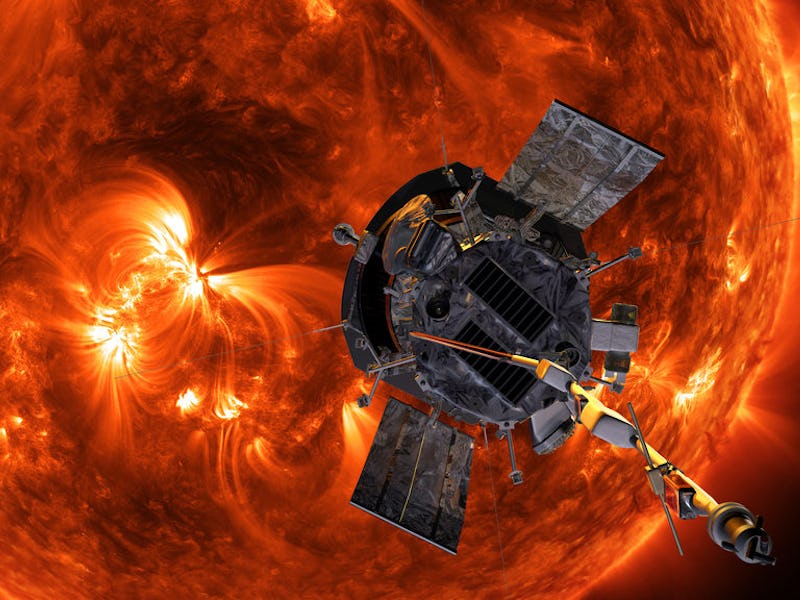Past the "Alfvén Point," the Parker Solar Probe Officially Touches the Sun
Past this threshold, the probe makes history.

Thank heavens the Parker Solar Probe isn’t made of wax, because its about to fly closer to the sun than even Icarus dared. On August 11, NASA is launching the probe into a part of the sun’s outer atmosphere known as the Alfvén point. If it manages to get past it, we can officially say a human-made object has touched the sun.
This practice tends to end poorly for mythological beings, but mere mortals have never attempted it. The reason we’re taking the risk is to measure the electric and magnetic fields within the sun, which astronomers believe will lead to a better understanding of how solar winds — the super-charged electrons and ionized atoms that blast out of the sun toward Earth — knock out our spacecraft and cause magnetic disturbances (like the Northern lights) in our own atmosphere.
Getting past the Alfvén point — named for Hannes Alfvén, the Swedish physicist who first characterized the waves that bounce around below the point (more on that later) — won’t be easy, but if it happens, the Parker Solar Probe will make history.
A diagram of NASA's Parker Solar Probe.
Below the Alfvén point, the charged particles of the Sun’s atmosphere that make up the solar wind are no longer in contact with the direct surface of the sun. It’s there that scientists hope to find clues about how the solar wind’s particles get to move so quickly in the first place.
They know that, below the Alfvén point, Alfvén waves travel like vibrations back and forth from the Sun’s surface. Once they breach the point, they speed up, no longer being able to rebound back, and it’s thought that the charged particles that end up being flung toward Earth are somehow accelerated by these rapidly moving waves.
To get to the Alfvén point, which is approximately tens of solar radii from the sun, NASA is launching the probe on the back of its largest rocket, the Delta IV Heavy. The gravity of Mercury and Venus will help guide it into position as it zooms toward the center of the solar system. While the probe itself is covered with a heat shield, the Solar Probe Cup sensor, jutting out from the protective barrier, will view and collect samples from the actual atmosphere.
This mission is more than just a collective “I told you we can touch the sun” from everybody at NASA. It’s a solar journey, 60 years in the making, that will hopefully explain how we can better protect ourselves and our spacecraft from powerful solar winds.
The sun’s atmosphere is full of ions, electrons, and other particles that create nasty solar windstorms. Those fiery weather patterns actual eject massive clouds of plasma at the Earth, which disrupts GPS, radio, radar, and even the electrical grid. The Parker Solar Probe, if it reaches its destination, can collect data that will assist prediction software in giving electricity providers an early warning about solar storms, so that they in turn can prevent major power outages.
Rage, rage, into the dying of the light, Parker Solar Probe. We’ll be rooting for you down here.